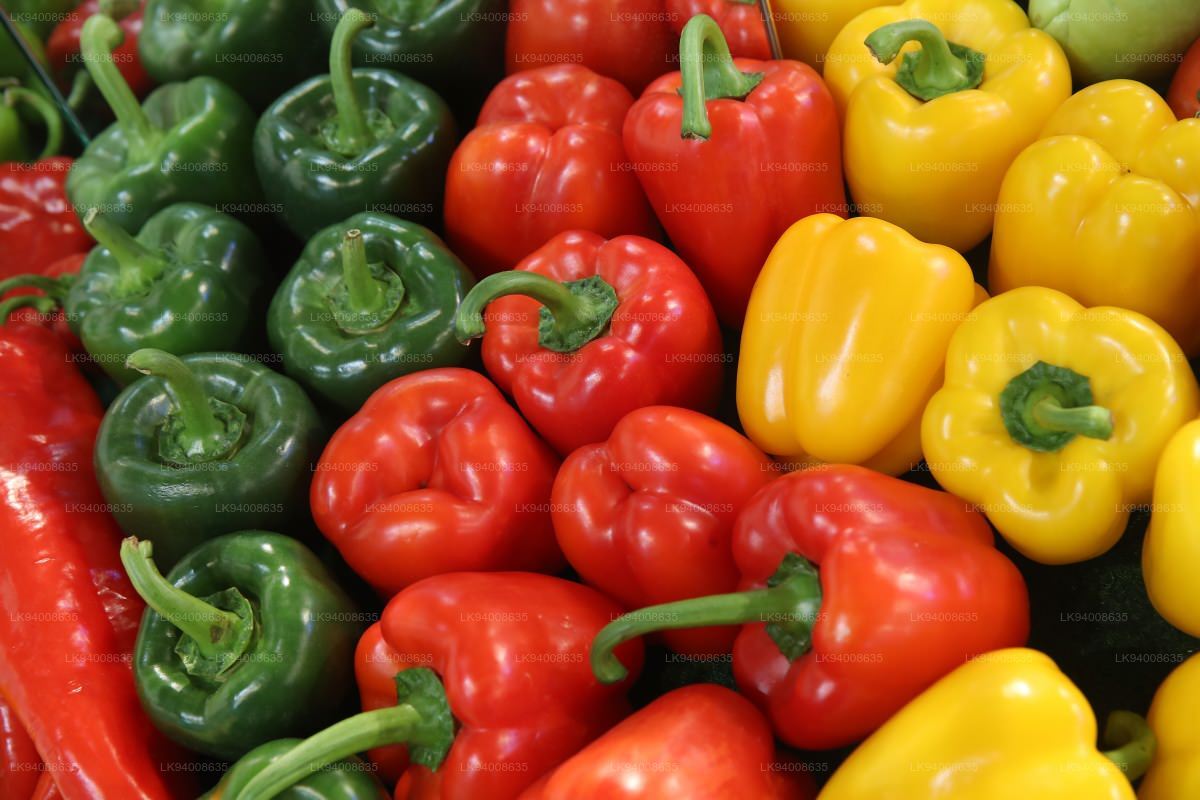Capsicum
From the colorful Pizza-toppings of the Italian cuisine to the flavoursome Chili-Chicken delicacy of the Chinese cuisine, Capsicum is one of the most widely cultivated vegetables in the world. Read more about how to grow this plant. Despite being a single species, Capsicum has many forms with a variety of luscious colors like red, yellow, green, purple and even black! In addition to its use as spices and vegetables, Capsicum has also found use in medicines because of its excellent health benefits.
Growing conditions
Ideal growing conditions for peppers include a sunny position with warm, loamy soil, ideally 21 to 29 °C (70 to 84 °F), that is moist but not waterlogged. Extremely moist soils can cause seedlings to "damp-off" and reduce germination.
The plants will tolerate (but do not like) temperatures down to 12 °C (54 °F) and they are sensitive to cold. For flowering, Capsicum is a non-photoperiod-sensitive crop. The flowers can self-pollinate. However, at extremely high temperature, 33 to 38 °C (91 to 100 °F), pollen loses viability, and flowers are much less likely to pollinate successfully.
Species and varieties
Capsicum consists of 20–27 species, five of which are domesticated: C. annuum, C. baccatum, C. chinense, C. frutescens, and C. pubescens. Phylogenetic relationships between species have been investigated using biogeographical, morphological, chemosystematic, hybridization, and genetic data. Fruits of Capsicum can vary tremendously in color, shape, and size both between and within species, which has led to confusion over the relationships among taxa. Chemosystematic studies helped distinguish the difference between varieties and species. For example, C. baccatum var. baccatum had the same flavonoids as C. baccatum var. pendulum, which led researchers to believe the two groups belonged to the same species.
Many varieties of the same species can be used in many different ways; for example, C. annuum includes the "bell pepper" variety, which is sold in both its immature green state and its red, yellow, or orange ripe state. This same species has other varieties, as well, such as the Anaheim chiles often used for stuffing, the dried ancho (before being dried it is referred to as a poblano) chile used to make chili powder, the mild-to-hot, ripe jalapeno used to make smoked jalapeno, known as chipotle.
Peru is thought to be the country with the highest cultivated Capsicum diversity since varieties of all five domesticates are commonly sold in markets in contrast to other countries. Bolivia is considered to be the country where the largest diversity of wild Capsicum peppers are consumed. Bolivian consumers distinguish two basic forms: ulupicas, species with small round fruits including C. eximium, C. cardenasii, C. eshbaughii, and C. caballeroi landraces; and arivivis, with small elongated fruits including C. baccatum var. baccatum and C. chacoense varieties.
The amount of capsaicin in hot peppers varies significantly among varieties, and is measured in Scoville heat units (SHU). The world's current hottest known pepper as rated in SHU is the 'Carolina Reaper,' which had been measured at over 2,200,000 SHU.










